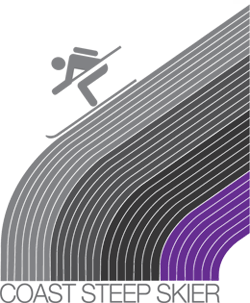 I don’t get stoked easily, but I am totally psyched to bring you this interview because Trevor Hunt skis literally the gnarliest shit on almost ski mountaineering racing gear – and you never heard of him!
I don’t get stoked easily, but I am totally psyched to bring you this interview because Trevor Hunt skis literally the gnarliest shit on almost ski mountaineering racing gear – and you never heard of him!
Sure there are people that knew of Trevor before but the reality is that most of us never heard about him even a year ago, yet, for over a decade now, he has been collecting big lines and first descents.
To this day I never met him, never talked to him. Despite that I decided to bother him with an interview request. He agreed.
And here we go, as good as it gets!
» Trevor’s blog – http://www.coaststeepskier.com/wphome/
» Trevor on Twitter – @coaststeepskier
Q: Trevor, you grew up in Whistler, what is your skiing background? Downhill racing?
No racing. I was sort of a mellow freeskier growing up. My parents mostly taught me in the beginning.
Fun fact: Shane McConkey’s Dad, Jim, once told my Dad not to give kids ski poles when they’re young. I remember being made fun of by the other kids for not having poles. But I guess I turned out pretty good.
Q: When did the steep slopes become a strong inspiration?
I discovered the backcountry in late high school, but skiing steeps in the backcountry didn’t come till after 4 years at University.
I moved back to Whistler, and gradually progressed on steeper objectives. I enjoyed it, but it was all pretty innocent. Wasn’t really aware or concerned with skiing anything specific, or with the history of the sport, or what other people were currently doing.
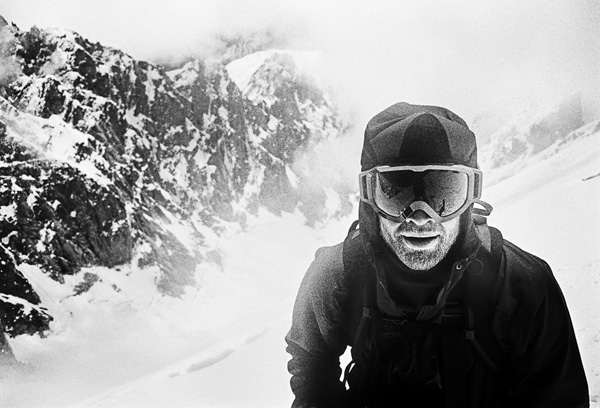
Probably easiest to take a step back. To me, the term ski mountaineering works well as an umbrella term for travelling safely in the mountains, using mountaineering skills to traverse glaciers and climb and ski technical lines. These skills are the priority, and allow participants to have a wide range of skiing abilities. For example, expert climbers with little ski experience can have great success in ski mountaineering.
I see steep skiing as a sub-discipline of this: the art of linking turns on ultra-steep slopes with no safe run-outs. Steep skiing focuses on the skiing and its style. Whether on skis or snowboard, side-slipping is not steep skiing… it is just side-slipping.
Regardless of how many rappels are done, if the skiing in-between isn’t steep, well it just isn’t steep skiing. But even steep skiing has become just another overused hashtag.
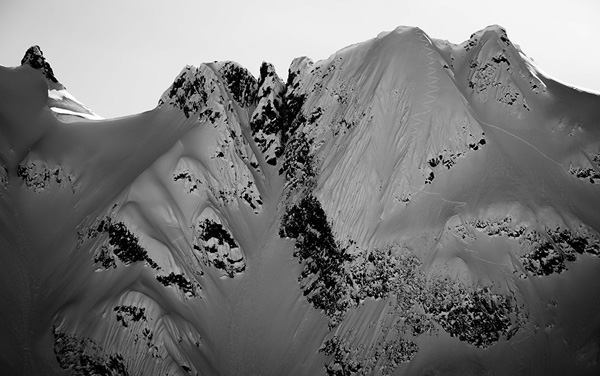
Q: Which lines that you skied challenged you the most?
My 2003 solo of the Siberian Express on Atwell Peak – I was young and had never soloed anything that physically nor mentally challenging.
My 2004 solo of Nun (7000m) in India – I’d gone a bit rogue in the Himalayas and was randomly picking off various peaks in different countries. Internet was spotty back then and I don’t think anyone knew I was actually in India. Playing that far away from the safety net was mentally challenging.
1st descent of Mount Vancouver in 2005 with Ptor Spricenieks – two days of non-stop climbing and skiing, maybe the most challenging endurance-wise.
1st descent of the Canadian on Atwell in 2012 – I made the mistake of climbing a slope (without a rope) that was too steep and icy to ski. Took some serious mental gymnastics to convince myself it was skiable.
1st descent of the southeast couloir of Chatyn-Tau, Georgia this year – conditions were very icy, slopes were very steep and my legs were totally spent.
Stano’s note: Atwell Peak has special place in Trevor’s heart, or is it that it’s just close to his home.
Q: Within reason, you use quite the light gear for such lines. Can you discuss some of your history with light gear?
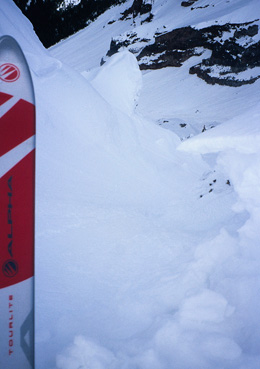
In 2006 I bought some TLT4 boots, and used them on some ‘fat’ ultra-light Goode Carbon skis. This setup opened my eyes to the Jedi techniques possible when using light and wide skis in deep powder. Since then, I’ve been experimenting with some of the lightest boots and bindings available on fatter skis.
I cannot overstate the joy of skiing deep powder with these types of setups – pretty much a different sport. Something about all the weight being distributed along the length of the ski, allows for interesting centrifugal forces within the carve. Even the weight of standard ‘light’ boots and tech bindings, is enough to create dead weight in the center of the ski, and ruin the fun.
When I bought my DyNA’s in ’09, I sold all my heavier boots, and haven’t skied on a boot with more than 2 buckles since. I also bought what was probably the first pair of Plum race bindings sold at retail in North America. A little ridiculous since I immediately mounted them on a pair of powder skis.
Q: Can you list some of the gear combinations that you use and for what?
My favourite steep setup was 171cm Dynafit Nanga Parbats 74mm wide with low-tech bindings and DyNA boots (09/10 models). But I sold the skis, since the low-techs couldn’t handle steep ice.
This has been replaced with 174cm Dynafit Cho Oyus 88mm wide, with Speed Radicals (they’re samples that came with Speeds so I’ll probably lighten up the heels).
Currently my steep powder setup is Dynafit TLT 6 boots with Speed toes and proto heels (56g), on 173cm Grand Tetons 105mm wide. Also have the same combo on a pair of 186 Dynafit Huascarans 114mm wide, for powder and big mountain stuff.
I’ve also gotten back on the “light and fat” program, with DyNA Evo boots, superlight bindings and 177cm Huascarans 112mm wide. Although I should probably just have Low Techs on this setup instead of Superlights.
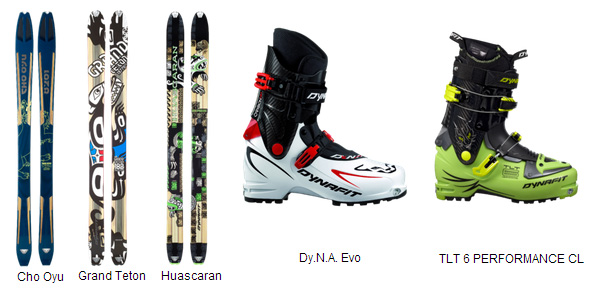
Q: Just give us a perspective to the above gear, how tall are you and how much do you weigh?
Six foot one, 175 pounds.
Q: Have you ever used the Ascent Plates for boot-packing up steep snow?
I used them a bunch last year. They did a great job of saving my energy, and allowed me to get up stuff that would usually be too steep to climb in deep snow. I could also see them revolutionizing climbing speed ascents in the Himalayas etc. on lesser travelled peaks with no established tracks.
Stano’s note: If you like to go up steep snowy slopes I recommend checking out these plates – http://billygoattech.com. I have never used them and have no affiliation but I am becoming a fan.
Q: Where have you skied outside of Coast Mountains?
With a job and bills etc, I’ve been more focused with skiing in my backyard, but when I was younger I spent a lot of time overseas. I have a special connection with a family in the Karakoram (Pakistan) that I’ve visited a few times. India, Nepal, New Zealand, Georgia, Alaska, Peru. Most trips were always very random with no clear objectives, which is my favourite kind.
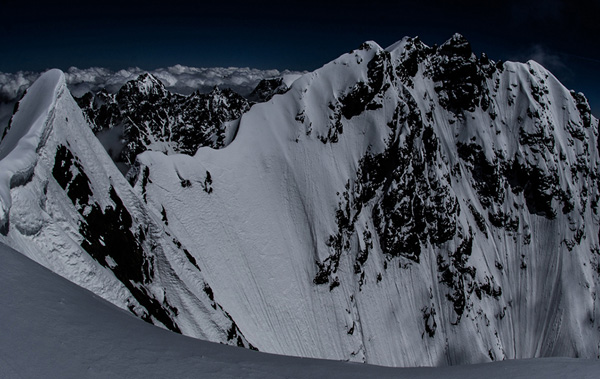
Well there are the usual suspects, the last great ski lines that everybody mentions. I also have a bunch of world-class lines off the radar. But as I mentioned before, I enjoy trips that don’t have specific itineraries, mountains, or routes. Impossible to get sponsors though when your main goal is just to wander in the Himalayas and poach peaks at random.
Q: You have recently become a Dynafit athlete. Do you have a daily job?
I’m a designer. Mostly backpacks and outdoor clothing.
Q: Do you do any special training to improve at what you do?
Not really any specific training. I think weight training is important to make your body more indestructible. I’m not as concerned about my cardio, which slowly builds throughout the season as I ski tour. But I always try to keep the body moving.
Q: What other sports do you do? And what about summer, do you ski or just enjoy other things?
I’m certainly a very dedicated skier. I had such an intense winter last year that I really relaxed this summer. I’ve always dabbled a bit in climbing and mountain biking though – hard not to when you live in Squamish.
Q: You do lots of big missions by yourself. I have done a couple like that myself. What is your reasoning, or not fearing to do something big alone?
Because of the stable snowpack and easy travel on relatively smooth glaciers, the Coast has a rich history of soloing: from guys like Trevor Peterson, to Ptor Spricenieks, and now I guess I’m continuing that tradition.
For me soloing was a natural and slow progression. When I was young it was probably a bit ego based. But I soon realized that I was just meant to do some stuff solo, and I really began to enjoy it. There is a purity to it as well, in that you make 100% of decisions for yourself, which is a must when skiing stuff with life and death consequences. No one is there to influence you with his or her fears or over-confidence.
But getting psyched on soloing is about as cool as getting psyched on heroin. I would never suggest it, and I certainly wouldn’t solo the big stuff if I had kids.
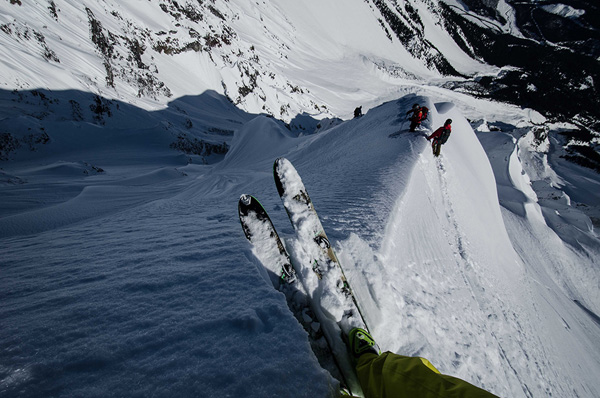
The coolest thing about steep skiing is that there is no best, no gold medals, no competition. Every participant at the elite level has the same life and death mental struggles, regardless of the advancement in gear over previous generations. So you don’t get much progression, or descents that are heads and shoulders above the rest.
If I had to choose a descents that give me the most joy just thinking about them, then surely the style of Chris Brazeau’s solo descent of Bryce is tops. It’s probably the most badass singular effort in North American ski mountaineering. What makes it even cooler, is that the ski media doesn’t seem realize it even happened, and also the fact that Chris is an unsponsored dirt-bag climber (thank-god someone is still keeping shit real!).
Internationally you’d assume that the most significant descents would happen in highest mountains of Himalayas. But skiers have had very mixed results in the fickle conditions there. I’ve always enjoyed the descents of Jean Noel Urban. I like the G6 descent in Pakistan or both the SW face attempts on Shishipangma (8,013m). But he wrote so little about them before he died.
Q: And who are some of the skiers/mountaineers/people that you find most inspiring?
Risking your life in the mountains is a totally personal experience. So I’ve never really been inspired by anyone else, although I certainly enjoy looking at what others are doing, and I’m psyched when a guy like Andreas Fransson skis something big. But in sports where death is a possible consequence, I don’t think there should be any heroes, role models, or inspiring figures.
If a skier succeeds on a massive line, we have no idea what his internal motivations are. Is he motivated by ego, recognition, depression, or is he naïve and surviving on dumb luck? No matter how the media romanticizes ski mountaineers, everybody has shit simmering below that isn’t very inspiring.
But I wouldn’t mind the fitness of Kilian Jornet and the skills of Jean Marc Boivin RIP.
Q: What would be your advice for someone that is a good backcountry skier but would like to try some steeper lines or couloirs? How should they go about it?
Having common sense and infinite patience are the two most important things any steep skier can have.
Education and learning from others is obviously important, but don’t rely on them. Learn about yourself and your own limitations. It is a very precise sport, and if you’re not a very precise person then you should probably try something else.
Have an ‘elastic’ mind (ie. be open to every possibility, don’t blindly follow established plans). Talk to the experts in your area. Find the fun, easy lines and progress from there.
And that’s it for the chat with Trevor – Thank you!
I am super happy he shared so much about his gear and that for a long time he kind of devoted himself to test its limitations for us 😉


Guidsnow schnelskier says
Many thanks for the insight and careful explanations of all things steep skiing. In regards to the dynafit binding heel rotation/elasticity issue…I’ve had similar experiences and wonder if a good compromise solution of having more precise and ‘safe’ real world performance in hard/icy snow steep or not steep, is a rotational lockout option…with vertical release remaining intact? The logic is more precise turns on hard snow and in case of a fall, potential ability to recover with skis on….if it’s a more serious high speed fall or avalanche, a vertically releasing heel may offer a lower limb saving option if the torque of a fall and/or avalanche /torques off the ‘locked’ dynafit toe? Over the last 15 years of various incarnations of dynaftting, i’ve had the occasional release in extreme situations (telemark skiing in touring boots on hard snow on with locked toe and free heel) so transposing this experience to the aforementioned scenerio…totally personal, anecdotal, and fact and data free opinion based on limited experience of specific forces involved.
Trevor Hunt says
After a comment on Twitter, I feel I should elaborate on why I said low techs (or plum races as well) couldn’t handle steep ice. In my experience, race bindings (both plums and dynafits) have been great for skiing 95% of what I ski. But when I’ve been side-slipping because I was unable to make turns on a slope due to steepness and ice, or I’ve been jamming my edges into the slope to get a bit of purchase between jump turns, I’ve looked back and watched in terror as my heels would rotate a significant amount. So it doesn’t necessarily happen during the jump turn (since there would be no way to look back and see during a committing jump turn!)
So if you are interested in skiing very steep lines in stiff conditions (lock you toes!), I’d suggest using a heel with DIN, or find a light heel that doesn’t rotate (they do exist).
Layne says
Great interview. Thanks for sharing!
Stano Faban says
Thank you Reiner 😉
It was a very fun to do interview, almost like any time talking to you, but without celery crunching 🙂
Reiner says
Awesome interview thanks Stano and Trevor.